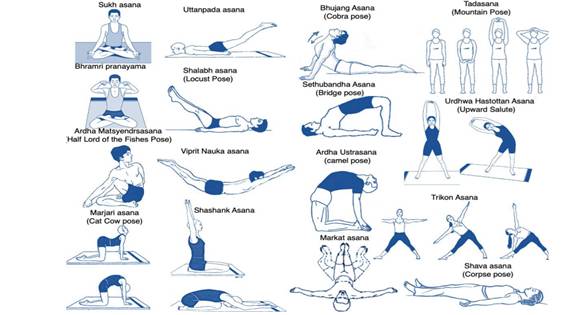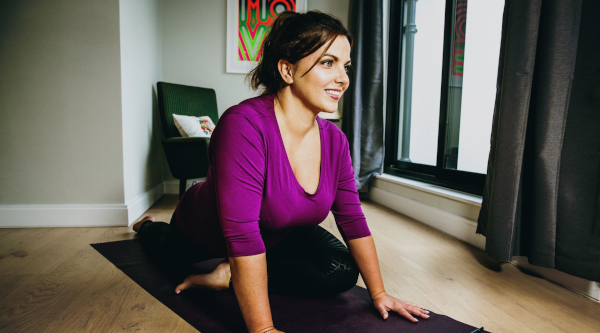Most of the yoga-based studies so far have relied on patient’s experience and rating of pain and disability as an indicator of recovery and better quality of life. Researchers who measured pain, pain tolerance and body flexibility have found that yoga leads to pain relief, increases tolerance of pain and improves flexibility in patients of chronic low back pain.
Dr Renu Bhatia, Additional Professor, Department of Physiology, AIIMS, New Delhi conducted research to measure the impact of yoga on Chronic Low Back Pain (CLBP) along with Dr Raj Kumar Yadav (Professor, Department of Physiology, AIIMS, New Delhi), Dr Sri Kumar V (Associate Professor, Department of Physical Medicine & Rehabilitation, AIIMS, New Delhi).
The study conducted on 100 Chronic Low Back Pain (CLBP) patients of 50 years with 3 years of history of the disease. After systematic Yogic intervention of 4 weeks, Quantitative sensory testing (QST) showed increase in thresholds for cold pain and cold pain tolerance. Corticomotor excitability and flexibility improved significantly in the patients.
They recorded objective measures for pain (electrophysiology), sensory perception (quantitative computerized sensory testing) and cortical excitability parameters. (using Transcranial Magnetic Stimulation of motor cortex).They found significant changes between all the parameters in CLBP patients compared to healthy controls at baseline. Significant improvement in all parameters was found after yoga.
This research supported by the Science and Technology of Yoga and Meditation (SATYAM) funded by the Department of Science and Technology, GoI has been recently published in the ‘Journal of Medical Science and Clinical Research’.
Assessment of pain and corticomotor excitability parameters shall help in establishing strong ground with scientific evidence for yoga to be prescribed as therapeutic intervention for chronic low back pain relief with or without standard therapy depending on the pathology. Also these parameters can be used for prognosis and follow-up of patients during recovery phase.
The team also developed yoga protocol for CLBP patients and for fibromyalgia patientsin Pain Research and TMS laboratory, AIIMS, New Delhi.

In patients with Chronic Low Back Pain, 4 weeks of yoga intervention improved pain status and pain-related functional disability, increased spinal flexibility and corticomotor excitability significantly more than standard care.
The study suggests that in long term Yoga can be performed at home, and hence is an inexpensive therapeutic intervention. It not only relieves pain but also improves overall quality of life and bestows other health benefits.
You may also like
-
India Against Mpox
-
Combination of ‘Siddha’ Drugs Reduces Anemia in Adolescent Girls: Study
-
Suspected Mpox Case Under Investigation; Patient Put Under Isolation, No Cause for Alarm
-
Prime Minister Applauds India’s Best Ever Performance at the Paralympic Games
-
National Exit Test (NExT) for Ayush to be Effective from 2021-2022 Batch: Union Minister of Ayush Shri Prataprao Jadhav
